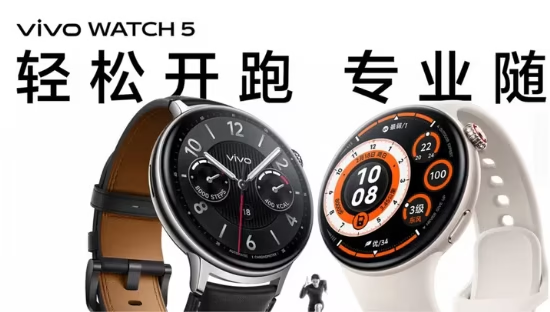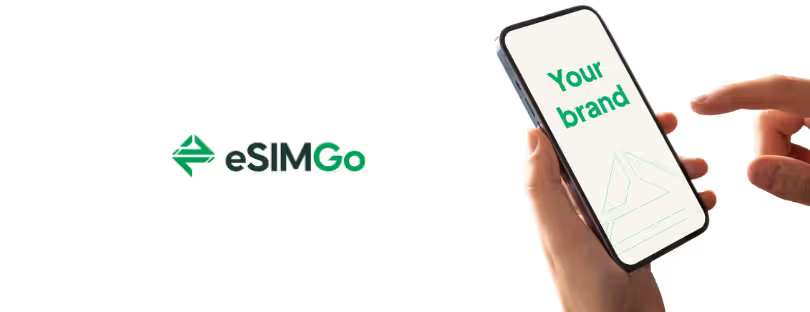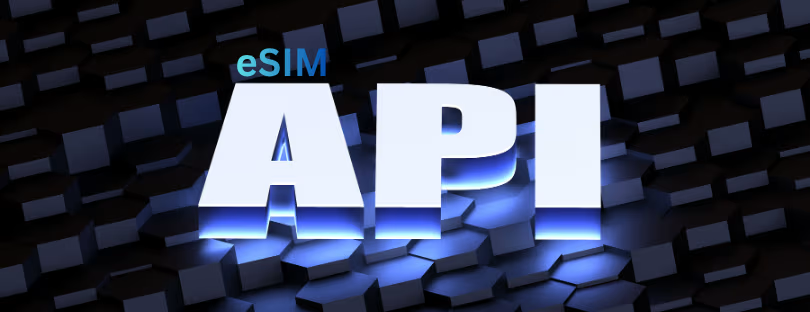
What Devices Use eUICC Today?
In today’s increasingly connected world, the way our devices connect to cellular networks is undergoing a significant transformation. At the heart of this evolution is eUICC (Embedded Universal Integrated Circuit Card) technology, a revolutionary approach to SIM functionality that is reshaping connectivity across multiple industries and device categories. Unlike traditional physical SIM cards that must be manually inserted and replaced, eUICC provides a software-based solution that enables remote provisioning and management of network profiles, offering unprecedented flexibility and convenience for both consumers and businesses. eUICC-enabled devices
The adoption of eUICC technology has accelerated dramatically in recent years, with implementations spanning from everyday consumer electronics to specialized industrial applications. This growth is driven by the technology’s ability to solve longstanding connectivity challenges, particularly for devices that need to operate across different regions or network providers. As we move further into 2025, eUICC has become a cornerstone technology enabling the next generation of connected devices, supporting everything from global roaming capabilities to streamlined IoT deployments.
This article provides a comprehensive overview of the diverse range of devices currently utilizing eUICC technology. We’ll explore how this technology is being implemented across various sectors, examine specific device examples in each category, and consider the market trends shaping its continued adoption. Whether you’re a consumer interested in the latest smartphone capabilities, a healthcare professional exploring remote monitoring solutions, or an industry professional planning IoT deployments, understanding which devices use eUICC today offers valuable insights into the future of global connectivity.
Understanding eUICC Technology
eUICC stands for Embedded Universal Integrated Circuit Card, representing a significant evolution in SIM card technology. At its core, eUICC is a software architecture that enables remote SIM provisioning (RSP) and management of multiple network operator profiles on a single SIM. This technology fundamentally changes how devices connect to cellular networks by eliminating the need for physical SIM swapping when changing operators or crossing borders. eUICC-enabled devices
The distinction between eUICC and eSIM is important, though the terms are often used interchangeably in consumer contexts. eSIM (Embedded SIM) typically refers to the physical form factor—a SIM chip that is soldered directly onto a device’s circuit board. In contrast, eUICC refers specifically to the software capability that enables remote provisioning and profile management. An eSIM typically includes eUICC functionality, but the terms have distinct technical meanings. As explained by InHand Networks,
“While eSIM refers to the embedded hardware, eUICC is the software layer that enables remote profile management and multi-operator flexibility”.
The technical implementation of eUICC involves several components working together. The SIM profiles contain network operator credentials and authentication keys. The Subscription Manager-Secure Routing (SM-SR) manages the secure connection to the eUICC, while the Subscription Manager-Data Preparation (SM-DP) prepares and encrypts operator profiles. This architecture is standardized by the GSMA (Global System for Mobile Communications Association), which has developed specifications for both consumer and M2M (machine-to-machine) implementations. eUICC-enabled devices
 eUICC technology offers numerous benefits that explain its growing adoption across various device categories. First, it enables devices to store and manage multiple operator profiles simultaneously, allowing for seamless switching between networks without physical SIM replacement. This is particularly valuable for devices that cross borders or operate in regions with varying network coverage. Second, it simplifies global deployment by allowing manufacturers to install a single SIM during production that can later be provisioned with the appropriate local operator. Third, it optimizes logistics and inventory management by reducing the need for multiple SIM types for different regions or operators. Fourth, it enables remote management of network profiles, which is especially important for IoT devices deployed in remote locations. Finally, the increased memory capacity of eUICC allows for additional security applications, enhancing device protection.
eUICC technology offers numerous benefits that explain its growing adoption across various device categories. First, it enables devices to store and manage multiple operator profiles simultaneously, allowing for seamless switching between networks without physical SIM replacement. This is particularly valuable for devices that cross borders or operate in regions with varying network coverage. Second, it simplifies global deployment by allowing manufacturers to install a single SIM during production that can later be provisioned with the appropriate local operator. Third, it optimizes logistics and inventory management by reducing the need for multiple SIM types for different regions or operators. Fourth, it enables remote management of network profiles, which is especially important for IoT devices deployed in remote locations. Finally, the increased memory capacity of eUICC allows for additional security applications, enhancing device protection.The GSMA has established robust standards for eUICC implementation, with different specifications for consumer and M2M applications. The consumer specification is designed primarily for smartphones and personal devices, while the M2M specification was initially developed for the automotive industry and has more complex implementation requirements. According to Emnify,
“The GSMA is together with the subscription manager platform vendors defining a new standard that simplifies the profile update also for M2M use cases. This new standard will be similar to the consumer use case”.
More recently, the GSMA SGP.32 IoT standard has emerged to further streamline connectivity for automotive and IoT applications, as noted by Thales:
“The automotive industry is eagerly looking forward to the future of connectivity, and the GSMA SGP.32 IoT standard is playing a crucial role in shaping this transformative journey”.
As we explore the various device categories implementing eUICC technology today, it’s important to recognize that this technology represents more than just a convenience—it’s enabling new business models, enhancing global connectivity, and supporting the rapid expansion of IoT deployments across industries. eUICC-enabled devices
The consumer electronics sector has been at the forefront of eUICC adoption, with smartphones leading the way and other personal devices following suit. This widespread implementation has transformed how consumers connect their devices to cellular networks, offering unprecedented flexibility and convenience.
Smartphones eUICC-enabled devices
Smartphones represent the most visible and widespread adoption of eUICC technology in consumer electronics. As of 2025, virtually all major manufacturers offer models with eUICC capability, though implementation varies across brands and regions.
Apple was among the early adopters of eUICC technology, introducing it with the iPhone XS and XR models in 2018. Today, all current iPhone models support eUICC, including the entire iPhone 16 lineup released in 2024. According to Holafly’s May 2025 compatibility list, “iPhone 14, iPhone 14 Plus, iPhone 14 Pro, iPhone 14 Pro Max, iPhone 15, iPhone 15 Plus, iPhone 15 Pro, and iPhone 15 Pro Max are not compatible with physical SIM cards in the USA,” highlighting Apple’s commitment to an eSIM-only future in certain markets (Holafly, 2025). The latest iPhone 16 series continues this trend, with the standard iPhone 16, iPhone 16 Plus, iPhone 16 Pro, iPhone 16 Pro Max, and the new iPhone 16e all supporting eUICC technology.
Samsung has similarly embraced eUICC across its flagship lineup. The Galaxy S20 through S25 series (excluding some FE models and regional variants), Galaxy Note 20 series, and the innovative folding devices in the Z Fold and Z Flip lines all incorporate eUICC functionality. Samsung has also expanded eUICC support to its mid-range offerings, with select models in the Galaxy A series now featuring this technology. However, it’s worth noting that Samsung’s implementation has some regional limitations, as “all Samsung phones sold in Hong Kong except for Samsung Galaxy Z Flip (Model SM-F700F)” lack eUICC capability.
Google’s Pixel devices have included eUICC support since the Pixel 2, though early implementations had significant regional and carrier restrictions. The current Pixel lineup, including the Pixel 8, 8a, 8 Pro, and the newly released Pixel 9 series, offers robust eUICC support with fewer limitations. The Pixel Fold, Google’s entry into the foldable market, also features eUICC technology.
Chinese manufacturers have increasingly adopted eUICC in their global offerings. Xiaomi’s flagship models (13, 14, and 15 series), Huawei’s P40 and Mate 40 Pro, and Oppo’s Find X series all support eUICC. Motorola has implemented eUICC across its Razr foldable line and Edge series, while Sony includes the technology in its Xperia 1, 5, and 10 series devices.
Tablets eUICC-enabled devices
Tablet computers with cellular connectivity have also begun incorporating eUICC technology, though adoption has been more limited compared to smartphones. Apple’s iPad lineup includes several models with eUICC support, specifically those with cellular connectivity. According to Holafly, these include “iPad Pro 11″ (model A2068, from 2020), iPad Pro 12.9″ (model A2069, from 2020), iPad Air (model A2123, from 2019), iPad (model A2198, from 2019), iPad Mini (model A2124, from 2019), and iPad 10th generation (from 2022)” (Holafly, 2025).
Other tablet manufacturers have been slower to implement eUICC, though Samsung’s premium Galaxy Tab models with cellular connectivity and select offerings from Lenovo and Huawei now include this capability. As with smartphones, regional variations exist in tablet eUICC support.
Wearables
Wearable devices represent one of the most compelling use cases for eUICC technology, as their small form factor makes physical SIM cards impractical, yet they benefit tremendously from independent cellular connectivity.
Smartwatches have been early and enthusiastic adopters of eUICC. The Apple Watch, beginning with Series 3 cellular models and continuing through the current Series 10 and Ultra models, utilizes eUICC to enable independent cellular connectivity. According to Tascom,
“The Apple Watch continues to dominate. The Series 10 and any models that will be released in late 2025 will build on the Apple Watch’s cellular technology”.
This allows users to make calls, send messages, stream music, and access online services without needing their iPhone nearby.
Samsung’s Galaxy Watch series, including the Galaxy Watch 7 and Galaxy Watch Ultra, incorporates eUICC technology to provide similar standalone functionality for Android users. Google’s Pixel Watch 3, Huawei’s Watch 4 Pro, and the OnePlus Watch 2 all feature eUICC capabilities, enabling cellular connectivity independent of a smartphone.
Beyond smartwatches, other wearable form factors are beginning to adopt eUICC technology. Smart rings from manufacturers like Oura and Samsung (Galaxy Ring) are incorporating cellular connectivity for health monitoring and notification purposes. Smart glasses, such as Meta’s Ray-Ban smart glasses, are also beginning to leverage eUICC for connectivity features.
The wearables market continues to show strong growth, with global shipments reaching 538 million units by the end of 2024, according to IDC data cited by Eseye (2025). While growth is expected to slow to 3.9% in 2025 as major markets approach saturation in smartwatch adoption, new form factors and use cases are emerging.
“Hearables, for example, grew 10.3% in 2024 and are expected to maintain this growth trajectory in the coming years,”
notes Eseye, highlighting the expanding diversity of eUICC-enabled wearable devices (Eseye, 2025).
The consumer electronics sector’s embrace of eUICC technology has fundamentally changed how users connect and manage their devices. As implementation continues to expand across device categories and price points, consumers are increasingly benefiting from the flexibility, convenience, and enhanced functionality that eUICC enables. The technology has moved from a premium feature to an expected standard in many device categories, signaling its growing importance in the consumer electronics landscape.
Internet of Things (IoT) Devices
The Internet of Things (IoT) represents one of the most significant growth areas for eUICC technology, with applications spanning industrial settings, smart cities, agriculture, and supply chain management. The ability to remotely provision and manage connectivity is particularly valuable for IoT deployments, which often involve large numbers of devices distributed across wide geographic areas and operating for extended periods.
Industrial IoT (IIoT)
Industrial IoT applications have embraced eUICC technology to enable flexible, reliable connectivity for manufacturing equipment, agricultural sensors, and logistics tracking devices. According to IoT Now,
“IIoT (Industrial IoT) allows machines and sensors in the fields of manufacturing, agriculture and logistics to change networks remotely and without physical intervention”.
This capability is crucial for industrial deployments where devices may be installed in remote or difficult-to-access locations.
Specific industrial devices leveraging eUICC include InHand Networks’ CR202 and FWA industrial routers, which incorporate eSIM technology with eUICC functionality to provide reliable connectivity for industrial applications. These devices enable remote management and network switching capabilities that are essential for maintaining consistent connectivity across different regions and network environments.
The industrial sector’s adoption of eUICC is driven by the need for long-term reliability and flexibility. As noted by Telit,
“Many verticals and use cases require a comprehensive solution for global-local deployments. Such applications will benefit from a combined eUICC and multi-IMSI” approach.
This combined approach allows industrial devices to maintain connectivity across different regions and network environments, ensuring continuous operation regardless of location or network availability.
Smart City Infrastructure
Smart city initiatives are increasingly leveraging eUICC technology to connect and manage public infrastructure components. According to IoT Now,
“eUICC is crucial for the management of public infrastructure and public utilities, such as streetlights and public transport. In these cases, the ability to remotely manage and switch network providers can avoid operational costs and enhance service quality and reliability”.
Smart streetlights, traffic management systems, public transportation monitors, and environmental sensors all benefit from eUICC’s ability to provide reliable, manageable connectivity. These devices often need to operate for years without physical intervention, making remote provisioning and management capabilities essential for maintaining connectivity and updating network profiles as needed.
Asset Tracking and Logistics
Asset tracking represents another significant application area for eUICC technology in the IoT space. Devices tracking shipments, vehicles, and valuable assets across regions or international borders benefit tremendously from eUICC’s ability to maintain connectivity by switching to local networks as needed.
Global logistics trackers equipped with eUICC can seamlessly transition between networks as shipments cross borders, ensuring continuous tracking and monitoring without requiring physical SIM changes or roaming arrangements. This capability is particularly valuable for high-value or sensitive shipments that require constant monitoring throughout their journey.
Fleet management systems for commercial vehicles similarly leverage eUICC to maintain consistent connectivity for tracking, diagnostics, and communication across different regions and network providers. This ensures that fleet operators can maintain visibility and control over their vehicles regardless of location.
Market Growth and Projections
The IoT market overall is experiencing significant growth, with eUICC technology playing an increasingly important role in enabling connectivity for diverse applications. According to data cited by Telit,
“By the end of 2022, there will be 14.4 billion active connected devices. These devices include everything from smartphones to machines. With continued growth and use in households, offices, factories and the field, experts expect that number to jump to 27 billion by 2025”.
Within this broader growth, the eUICC market specifically is projected to expand substantially. IoT Now reports that “the eUICC market is expected to grow from US619millionin2020toUS619 million in 2020 to US3.2 billion in 2027″ (IoT Now, 2024). This growth reflects the increasing recognition of eUICC’s value in enabling flexible, manageable connectivity for IoT deployments.
InHand Networks cites GSMA Intelligence projections that “the number of eSIM and eUICC-enabled devices is expected to exceed 6 billion by 2025″ (InHand Networks, 2025). This rapid growth is driven by the technology’s ability to address key connectivity challenges across consumer, industrial, and enterprise applications.
The IoT sector’s adoption of eUICC technology continues to accelerate as organizations recognize its value in enabling flexible, reliable connectivity for diverse applications. From industrial sensors to smart city infrastructure to global asset tracking, eUICC is becoming an essential component of IoT connectivity strategies, supporting the continued expansion of connected devices across industries and use cases.
Automotive Industry
The automotive sector has emerged as one of the most significant adopters of eUICC technology, with connected vehicles increasingly relying on embedded connectivity solutions for everything from telematics to entertainment systems. The ability to remotely provision and manage connectivity is particularly valuable for vehicles that may travel across borders or operate for many years, requiring flexible network access throughout their lifecycle.
Connected Vehicles
Modern vehicles are increasingly designed as connected platforms, with cellular connectivity enabling a wide range of features and services. According to Thales Group,
“Car manufacturers and their Tier 1 suppliers need high-quality and future-proof connectivity to enable the connected car of the future – providing everything from telematics to preventive maintenance to accident prevention and enhanced entertainment systems”.
eUICC technology provides the flexible, reliable connectivity foundation necessary to support these diverse applications.
Volvo’s XC40 Recharge exemplifies this trend, representing “a promising example of built-in connectivity as the car’s core” (Ericsson, 2020). This and other modern vehicles incorporate eUICC technology to enable seamless connectivity for navigation, emergency services, entertainment streaming, and remote diagnostics, regardless of the vehicle’s location or the local network environment.
The automotive industry’s adoption of eUICC is accelerating as manufacturers recognize its value in simplifying global deployments. As Thales explains,
“The single and universal eUICC simplify manufacturing and logistics for global car OEMs. They can integrate a unique eSIM design across all vehicles, which can be remotely provisioned with a chosen mobile network operator (MNO) profile once the car is shipped or at the end of a connectivity contract”.
This capability streamlines production and deployment while ensuring vehicles maintain connectivity throughout their operational life.
Fleet Management Systems
Commercial vehicle fleets represent another significant application area for eUICC technology in the automotive sector. Fleet management systems leverage eUICC to maintain consistent connectivity for tracking, diagnostics, and communication across different regions and network providers. This ensures that fleet operators can maintain visibility and control over their vehicles regardless of location.
According to IoT Now, eUICC “has a particular advantage in fleet management that can manage communication with different network providers and regions” (IoT Now, 2024). This capability is especially valuable for international trucking companies and logistics providers whose vehicles frequently cross borders, requiring seamless connectivity transitions without service interruptions.
Benefits for Global Automotive Manufacturers
For automotive manufacturers, eUICC technology offers several compelling benefits beyond simplified logistics. Thales notes that
“Thales automotive eUICC also improve vehicle safety as they are integrated during manufacturing. In addition, they will further identify vehicles and encrypt communications while the car is in operation”.
This enhanced security is increasingly important as vehicles become more connected and potentially vulnerable to cyber threats.
The physical durability of automotive-grade eUICC implementations is also crucial for this application. These components are “designed to endure extreme shocks, vibrations, temperature (-40 to +105 degrees C), and humidity for a long life span” (Thales Group, 2025), ensuring reliable operation throughout the vehicle’s lifecycle despite challenging environmental conditions.
Future Trends in Automotive Connectivity
The automotive industry is poised for significant transformation in its approach to connectivity, with eUICC technology playing a central role. According to IoT World Today,
“2025 promises to be a transformative year” for connected vehicles, with predictions indicating “that this will be the moment when at least one major OEM adopts a third-party framework to offer and monetize services at scale, ushering in a new era for the industry”.
The GSMA SGP.32 IoT standard represents an important advancement in this evolution. Thales explains that “The automotive industry is eagerly looking forward to the future of connectivity, and the GSMA SGP.32 IoT standard is playing a crucial role in shaping this transformative journey. Automotive Original Equipment Manufacturers (OEMs) are reaping the benefits of this advancement as it removes friction from SGP.02 M2M for IoT Device & Automotive” (Thales Group, 2025). This new standard builds on existing eUICC implementations to further streamline connectivity management for vehicles.
The concept of “Software-Defined Vehicles” (SDVs) is emerging as a key trend, with eUICC technology enabling the flexible connectivity these vehicles require. As vehicles increasingly rely on software for core functionality and features, the ability to maintain reliable, adaptable connectivity becomes essential for supporting over-the-air updates, feature additions, and service enhancements throughout the vehicle’s lifecycle.
The automotive industry’s embrace of eUICC technology reflects the growing importance of connectivity in modern vehicles. As cars evolve from mechanical transportation devices to connected computing platforms, eUICC provides the flexible, reliable connectivity foundation necessary to support diverse applications and services across global markets and throughout the vehicle’s operational life.
Healthcare and Medical Devices
The healthcare sector has emerged as a significant adopter of eUICC technology, with applications ranging from remote patient monitoring to personal emergency response systems. The ability to maintain reliable, independent cellular connectivity is particularly valuable for medical devices that need to transmit critical health data regardless of location or local network availability.
Remote Patient Monitoring Devices
Remote patient monitoring (RPM) represents one of the most important applications of eUICC technology in healthcare. These devices allow healthcare providers to track patients’ vital signs and health metrics outside traditional clinical settings, enabling more proactive and personalized care while reducing the need for in-person visits.
According to Eseye,
“Telehealth, or remote patient monitoring (RPM) using smart technology, is changing how people with long-term medical conditions and disabilities are being cared for. IoT wearables allow healthcare providers to monitor patients’ health remotely, reducing hospital visits, providing continuous data and insights, and enabling real-time intervention”.
eUICC technology enables these devices to maintain reliable connectivity regardless of the patient’s location, ensuring continuous data transmission and timely interventions when needed.
Specific examples of eUICC-enabled remote monitoring devices include Telli Health’s range of global remote patient monitoring equipment. As Eseye reports,
“Telli Health’s innovative range of global remote patient monitoring devices includes a blood pressure monitor, blood glucometer, pulse oximeter, and thermometer. Through partnering with Eseye, Telli Health became the first in the global healthcare device marketplace to achieve eUICC certification on Verizon’s 4G LTE network in the US, using the Eseye AnyNet+ eSIM”.
This certification highlights the growing importance of eUICC technology in enabling reliable connectivity for critical healthcare applications.
Other common remote monitoring applications leveraging eUICC include “blood pressure monitoring, asthma or chronic obstructive pulmonary disease monitoring by keeping track of oxygen levels, glucose level monitoring for diabetics, chronic urinary tract infection monitoring, and temperature monitoring” (Eseye, 2025). These devices benefit tremendously from eUICC’s ability to provide reliable, independent connectivity without requiring patient intervention to manage network connections.
Personal Emergency Response Systems
Personal emergency response systems (PERS) represent another important healthcare application for eUICC technology. These devices, often worn by elderly or vulnerable individuals, provide immediate access to emergency services when needed. eUICC enables these devices to maintain reliable connectivity regardless of location, ensuring help is always available when needed.
Fall detection devices for elderly care, location tracking devices for vulnerable individuals, and emergency alert wearables all benefit from eUICC’s ability to provide independent cellular connectivity. This independence from smartphones or home-based systems is particularly valuable for users who may be away from home or unable to access their phone during an emergency.
Benefits for Healthcare Providers and Patients
For healthcare providers, eUICC-enabled devices offer several significant benefits. The ability to continuously monitor patients remotely allows for more proactive care, potentially identifying issues before they become serious enough to require hospitalization. This approach can improve patient outcomes while reducing healthcare costs associated with emergency room visits and hospital readmissions.
For patients, these devices offer greater independence and peace of mind. The knowledge that their health is being continuously monitored, and that help is readily available if needed, allows many patients with chronic conditions to live more active, independent lives. The seamless connectivity provided by eUICC ensures these benefits are available regardless of location or network environment.
Market Growth in Healthcare IoT
The healthcare IoT market is experiencing significant growth, with eUICC technology playing an increasingly important role in enabling reliable connectivity for diverse applications. According to Eseye, “the value of the IoT in Healthcare (IoHT) market expected to more than double from 128billionin2023to128 billion in 2023 to 289 billion by 2028″ (Eseye, 2025). This rapid growth reflects the increasing recognition of connected healthcare devices’ value in improving patient outcomes and reducing healthcare costs.
Healthcare organizations are increasingly recognizing the business benefits of IoT initiatives. Eseye reports that
“healthcare and medical device organizations rated reducing costs (29%), increasing profit (25%), and increasing revenue (24%) as the top benefits their IoT initiatives focused on”.
eUICC technology’s ability to enable reliable, manageable connectivity for healthcare devices is a key enabler of these benefits.
The healthcare sector’s adoption of eUICC technology continues to accelerate as organizations recognize its value in enabling reliable, independent connectivity for critical medical applications. From remote patient monitoring to personal emergency response systems, eUICC is becoming an essential component of connected healthcare strategies, supporting the continued expansion of telehealth and remote care models.
Cross-Border Applications
eUICC technology has proven particularly valuable for applications that involve crossing international borders, where traditional SIM cards would require physical swapping or incur expensive roaming charges. The ability to remotely provision local network profiles enables seamless connectivity transitions as devices move between countries, supporting a wide range of cross-border use cases.
International Travel Devices
Travelers have increasingly benefited from eUICC-enabled devices that provide local connectivity without requiring physical SIM changes. International mobile hotspots with eUICC capability allow users to connect to local networks in different countries, avoiding expensive roaming charges while maintaining reliable internet access.
Global roaming devices leveraging eUICC technology can automatically switch to the most appropriate local network when crossing borders, ensuring continuous connectivity without user intervention. This capability is particularly valuable for business travelers who need reliable connectivity across multiple countries.
Translation devices represent another emerging cross-border application for eUICC technology. As Eseye notes,
“IoT-enabled wearable translators are already available that can instantly translate live verbal communication, text, street signs, menus and more in real time across multiple common languages”.
These devices rely on reliable cellular connectivity to access cloud-based translation services, making eUICC’s ability to provide seamless international connectivity particularly valuable.
Global Logistics and Supply Chain
The global logistics and supply chain sector has embraced eUICC technology to maintain visibility and control over shipments as they cross international borders. Tracking devices equipped with eUICC can seamlessly transition between networks as shipments move between countries, ensuring continuous monitoring throughout the journey.
According to InHand Networks,
“Logistics: Global shipment trackers leverage eUICC to ensure consistent network access across geographies”.
This capability is particularly valuable for high-value or sensitive shipments that require constant monitoring regardless of location.
Fleet management systems for international transportation similarly benefit from eUICC’s ability to maintain connectivity across borders. As IoT Now explains, eUICC
“has a particular advantage in fleet management that can manage communication with different network providers and regions”.
This ensures that vehicles remain connected and monitored throughout their international journeys.
Benefits for Multinational Operations
For organizations operating across multiple countries, eUICC technology offers significant advantages in managing connected devices. The ability to remotely provision and manage network profiles eliminates the need for physical SIM swapping when deploying devices in different regions, streamlining logistics and reducing operational complexity.
eUICC also enables more flexible approaches to connectivity management, allowing organizations to select the most appropriate local network provider in each region rather than relying on expensive roaming arrangements. This can significantly reduce connectivity costs while improving performance by leveraging local networks.
The cross-border applications of eUICC technology continue to expand as organizations recognize its value in enabling seamless international connectivity. From travel devices to global logistics trackers to multinational IoT deployments, eUICC is becoming an essential enabler of reliable, cost-effective connectivity across international boundaries.
Future Trends and Outlook
The adoption of eUICC technology continues to accelerate across device categories, with several key trends shaping its future evolution and implementation. Understanding these trends provides valuable insights into how eUICC will continue to transform connectivity across industries in the coming years.
Projected Growth of eUICC Adoption
Market projections consistently indicate substantial growth in eUICC adoption across device categories. According to IoT Now, “the eUICC market is expected to grow from US619millionin2020toUS619 million in 2020 to US3.2 billion in 2027″.
This represents a more than five-fold increase, reflecting the technology’s growing importance in enabling flexible, manageable connectivity for diverse applications.
InHand Networks cites GSMA Intelligence projections that “the number of eSIM and eUICC-enabled devices is expected to exceed 6 billion by 2025” (InHand Networks, 2025). This rapid growth spans consumer, industrial, and enterprise applications, highlighting eUICC’s broad relevance across use cases and industries.
Within specific sectors, growth projections are similarly robust. The IoT market overall is expected to reach 27 billion connected devices by 2025, up from 14.4 billion in 2022 (Telit, 2023). The IoT in Healthcare market is projected to more than double from 128billionin2023to128 billion in 2023 to 289 billion by 2028 (Eseye, 2025). These growth trajectories underscore the increasing importance of reliable, flexible connectivity solutions like eUICC in enabling the continued expansion of connected devices.
Emerging Device Categories
While smartphones and wearables have led eUICC adoption to date, several emerging device categories are poised to embrace this technology in the coming years. Smart home appliances, agricultural sensors, environmental monitoring systems, and urban infrastructure components are increasingly incorporating cellular connectivity, with eUICC providing the flexible connectivity foundation these applications require.
New wearable form factors represent another growth area for eUICC. As Eseye notes,
“Smart rings and smart glasses are also going to be interesting categories as new entrants and new use cases win attention, such as Meta’s success with Ray-Ban”.
These devices benefit from eUICC’s ability to provide independent cellular connectivity in a compact form factor.
The automotive sector is poised for significant transformation, with software-defined vehicles (SDVs) emerging as a key trend. According to IoT World Today, “2025 promises to be a transformative year” for connected vehicles, with predictions indicating
“that this will be the moment when at least one major OEM adopts a third-party framework to offer and monetize services at scale, ushering in a new era for the industry”.
eUICC technology will play a crucial role in enabling the flexible, reliable connectivity these vehicles require.
Technological Advancements on the Horizon
Several technological advancements are poised to enhance eUICC capabilities and applications in the coming years. The GSMA SGP.32 IoT standard represents an important evolution, building on existing eUICC implementations to further streamline connectivity management for IoT and automotive applications. As Thales explains, this standard “removes friction from SGP.02 M2M for IoT Device & Automotive” and offers “more granularity per country,” allowing for “tailored implementation in different regions”.
Enhanced security features represent another important advancement area. As connected devices become increasingly critical to business operations and daily life, ensuring their security becomes paramount. Future eUICC implementations are likely to incorporate additional security capabilities to protect against emerging threats and vulnerabilities.
Integration with edge computing and artificial intelligence represents another promising direction. As connected devices generate increasing volumes of data, the ability to process and analyze this information at the edge becomes increasingly valuable. Future eUICC implementations may incorporate enhanced capabilities to support these distributed computing models, enabling more intelligent, responsive connected devices.
The future of eUICC technology appears bright, with continued growth and evolution across device categories and applications. As connectivity becomes increasingly essential to products and services across industries, eUICC’s ability to provide flexible, manageable connectivity will ensure its continued relevance and adoption in the coming years.
Conclusion about eUICC-enabled devices
The widespread adoption of eUICC technology across diverse device categories represents a significant evolution in how devices connect to cellular networks. From smartphones and wearables to industrial sensors and connected vehicles, eUICC is enabling more flexible, manageable connectivity that adapts to changing requirements and environments without physical intervention.
Consumer electronics have led eUICC adoption, with virtually all major smartphone manufacturers now incorporating this technology in their flagship devices. Apple, Samsung, Google, and others have embraced eUICC to provide users with greater flexibility in managing their cellular connectivity, particularly when traveling internationally. Wearables have similarly benefited from eUICC, with smartwatches, fitness trackers, and emerging form factors like smart rings leveraging this technology to enable independent cellular connectivity despite their compact size.
The Internet of Things represents another significant application area for eUICC, with industrial sensors, smart city infrastructure, and asset tracking devices all benefiting from flexible, remotely manageable connectivity. The ability to provision and update network profiles over-the-air is particularly valuable for IoT deployments, which often involve large numbers of devices distributed across wide geographic areas and operating for extended periods.
The automotive industry has emerged as a major adopter of eUICC technology, with connected vehicles increasingly relying on embedded connectivity solutions for everything from telematics to entertainment systems. The ability to remotely provision and manage connectivity is particularly valuable for vehicles that may travel across borders or operate for many years, requiring flexible network access throughout their lifecycle.
Healthcare applications of eUICC continue to expand, with remote patient monitoring devices and personal emergency response systems leveraging this technology to maintain reliable, independent connectivity. These applications highlight eUICC’s value in enabling critical services that require consistent connectivity regardless of location or network environment.
Cross-border applications further demonstrate eUICC’s transformative potential, enabling seamless connectivity transitions as devices move between countries. From international travel devices to global logistics trackers, eUICC eliminates the need for physical SIM swapping while providing access to local networks for optimal performance and cost-efficiency.
Looking ahead, eUICC adoption is projected to continue accelerating across device categories, with market forecasts indicating substantial growth in the coming years. Technological advancements like the GSMA SGP.32 IoT standard will further enhance eUICC capabilities, while emerging device categories will expand its application areas.
As connectivity becomes increasingly essential to products and services across industries, eUICC’s ability to provide flexible, manageable connectivity ensures its continued relevance and adoption. The technology has evolved from a premium feature to an expected standard in many device categories, reflecting its growing importance in enabling the connected world of today and tomorrow.
The diverse range of devices using eUICC today demonstrates the technology’s versatility and value across use cases and industries. As implementation continues to expand and evolve, eUICC will remain a cornerstone technology enabling the next generation of connected devices, supporting everything from consumer convenience to industrial efficiency to life-saving healthcare applications. eUICC-enabled devices















